Submitted by WA Contents
Atelier Brückner imagines the Uzbekistan Pavilion as a sculptural wooden forest at Osaka Expo 2025
Japan Architecture News - Apr 29, 2025 - 05:19 7568 views
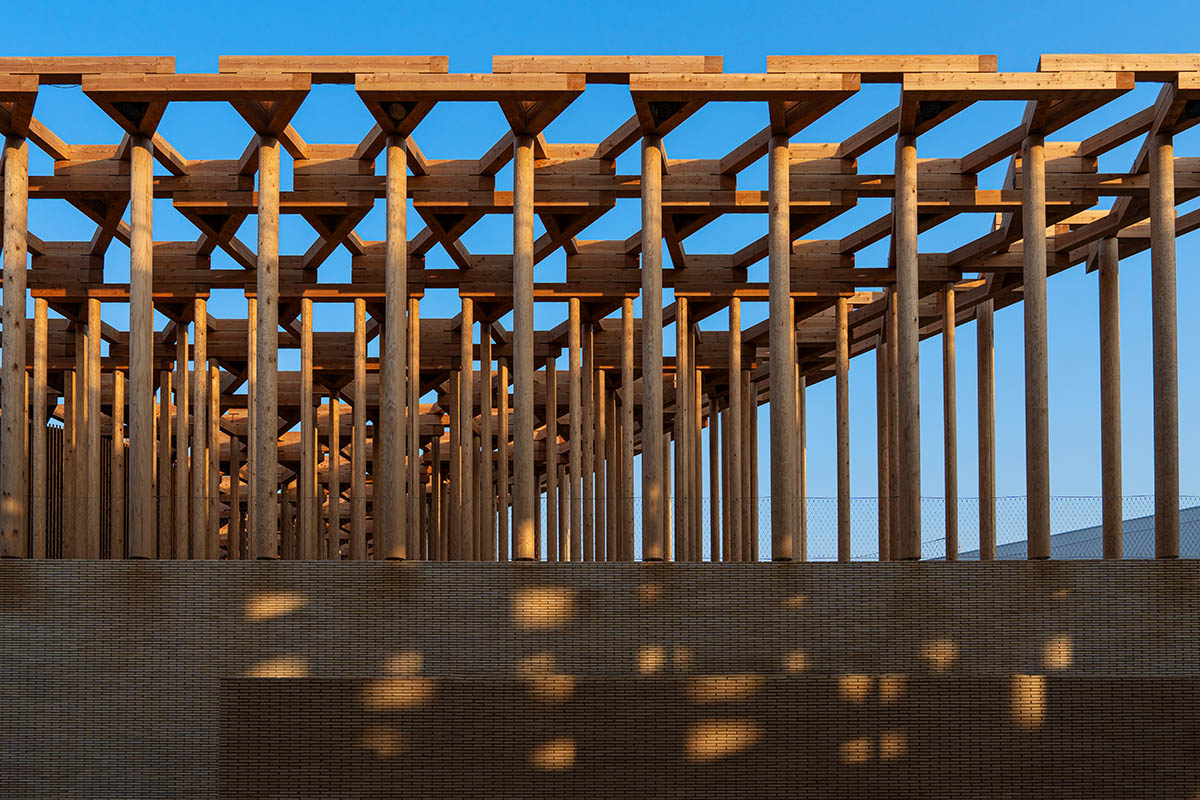
The Uzbekistan Pavilion at Osaka Expo 2025 is envisioned by a German architecture studio Atelier Brückner as a sculptural timber forest, representing a new era for the Central Asian country and a focus on growth and the future.
Titled Garden of Knowledge – A Laboratory for a Future Society, the pavilion, commissioned by the Uzbekistan Art and Culture Development Foundation (ACDF), is now open to the public.
The Expo 2025 in Osaka runs under the theme "Designing Future Society for Our Lives" and takes place on Yumeshima Island in Osaka Bay from April 13 to October 13, 2025.

The design, which has previously won Gold at the German Design Award, adheres to sustainable principles by using natural materials and modular construction.
The pavilion's exhibit provides insights into Uzbekistan's science, innovation, and transformation while showcasing the country's rich heritage.
The pavilion's design is a modern, environmentally friendly interpretation of Uzbekistan's traditional craftsmanship. With a 1,272-square-meter footprint and approximately 860 square meters of display area, the two-story pavilion offers a classic representation of the Uzbek environment. Constructed from clay and brick, the base symbolizes the nation's cultural legacy, the land, and its roots.
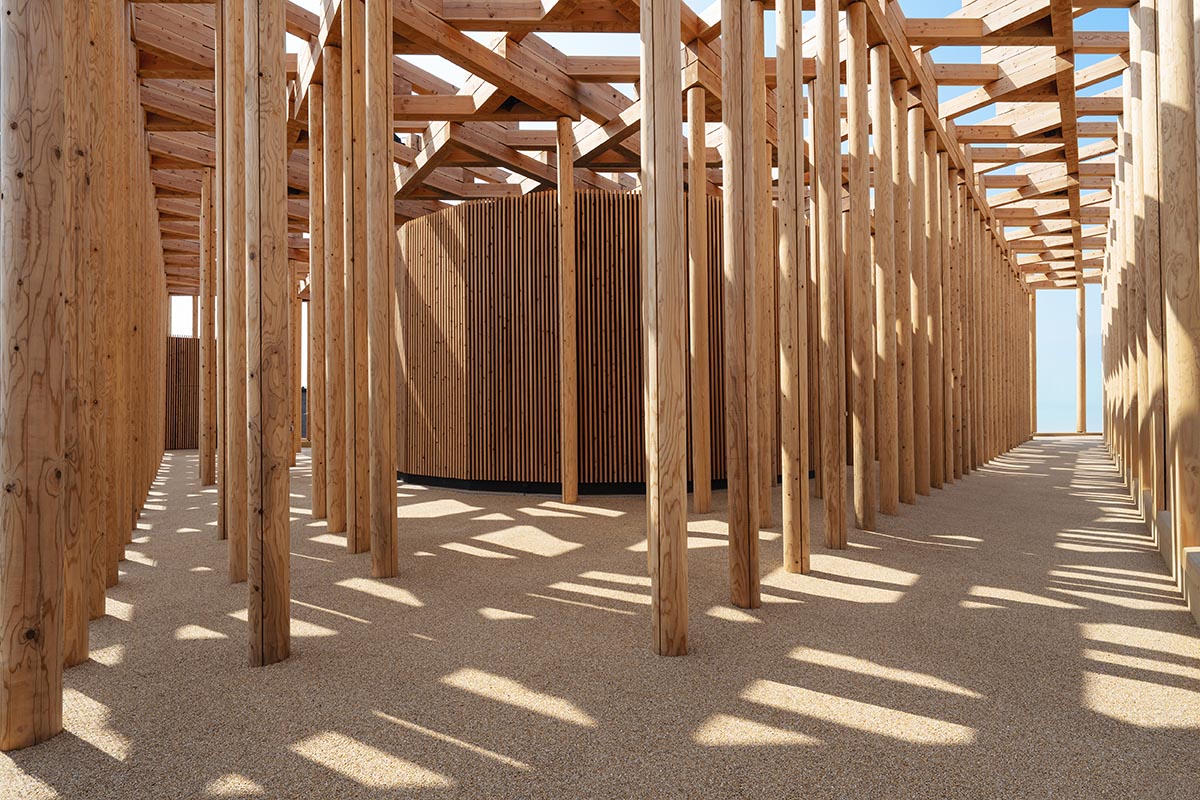
The 8-meter-tall wooden sculpture that stands on the outdoor terrace symbolizes the forest, which is a haven of safety and an open area for information sharing. The grove of columns alludes to colonnades, which are used to define spaces in classical temple and palace construction.
Openness in every direction is embodied by the pavilion's transparent, open, and accessible architecture, which provides space for ideas and growth. Every visitor is welcome to participate in the continuous changes taking place in the nation and witness Uzbekistan's developing future.
Natural, reusable materials with roots in Uzbekistani culture that have been reimagined for a contemporary setting include wood, clay, brick, gravel, and soil. They will completely return to either biological or technical cycles following the Expo.

For example, the wooden sculpture is reusable after being broken down into modular pieces. Visitors can even use a smartphone to pinpoint the wood's precise origin. All of the wood utilized is from local sources close to Osaka and is sugi, a native cypress type.
The Uzbekistan Pavilion positions itself as a social learning environment as well as a test bed for a future society. SDGs 4, 7, and 9 are the main emphasis of the exhibition, which shows how innovation, sustainability, and education are advancing society. A seed that takes root in the ground, grows, flowers, and eventually gives fruit is reflected in the show.

Exemplary projects on the ground floor, "The Soil," provide Uzbekistan's transition into reality. The shift to a green economy is the main topic of discussion in the sustainability section. Models and interactive materials highlight energy-efficient building practices, renewable energy projects, and sustainable modes of transportation.
The innovation area showcases developments in industry, infrastructure, and urban planning, such as the New Tashkent project and the Japanese government's assistance in reviving the Aral Sea. Innovations in technology and society are portrayed as essential to economic growth and participation.
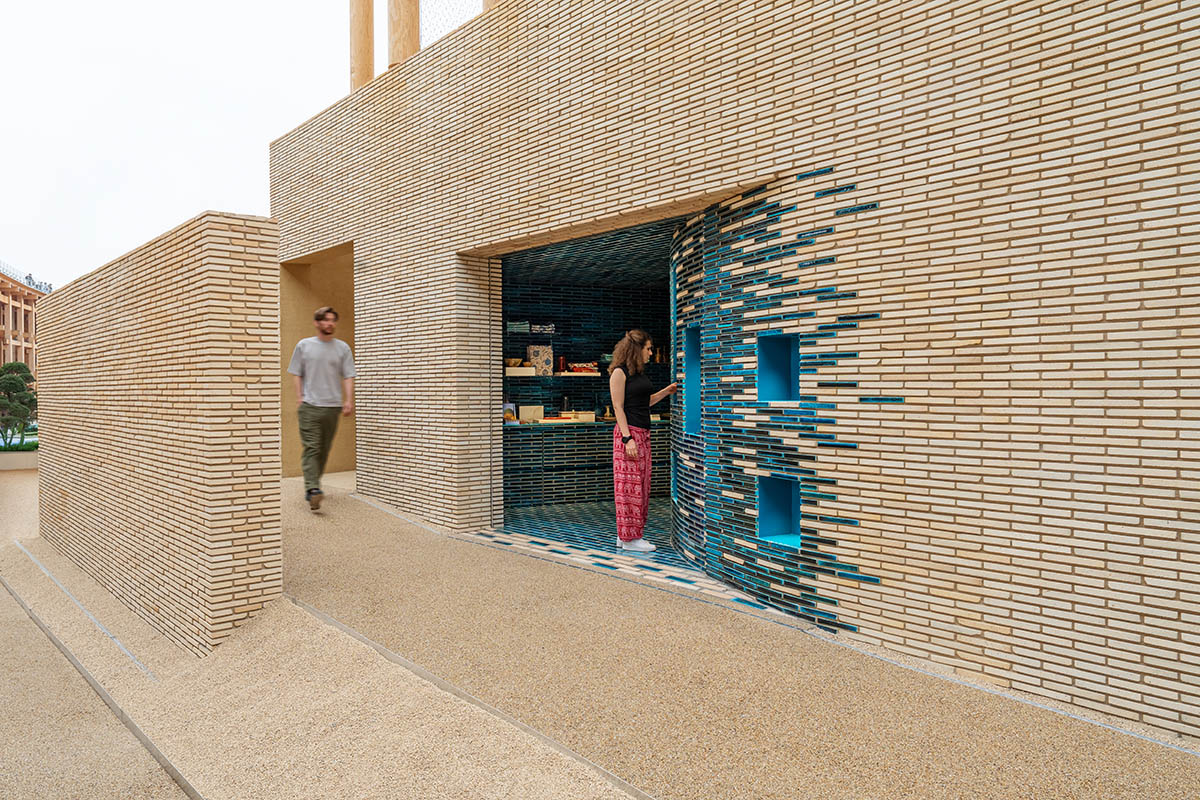
The education section demonstrates the integration of contemporary learning techniques with traditional crafts. Digital tools, youth artist training programs, and restoration initiatives for historic icons like the Bibi-Khanym Mosque—where cutting-edge technologies are applied to protect cultural heritage—are on show.
A metaphorical landscape is created by the walls' layered panorama of contemporary infrastructure, architectural outlines, and historic patterns. These components come to life through animated projections that chronicle the nation's change.
Pepper's Ghost projections, animated infographics, and interactive 3D models are all included in the display. Exhibits that appear to be growing out of the ground itself are made visible by special lighting fixtures that highlight Uzbekistan's progress and expansion.
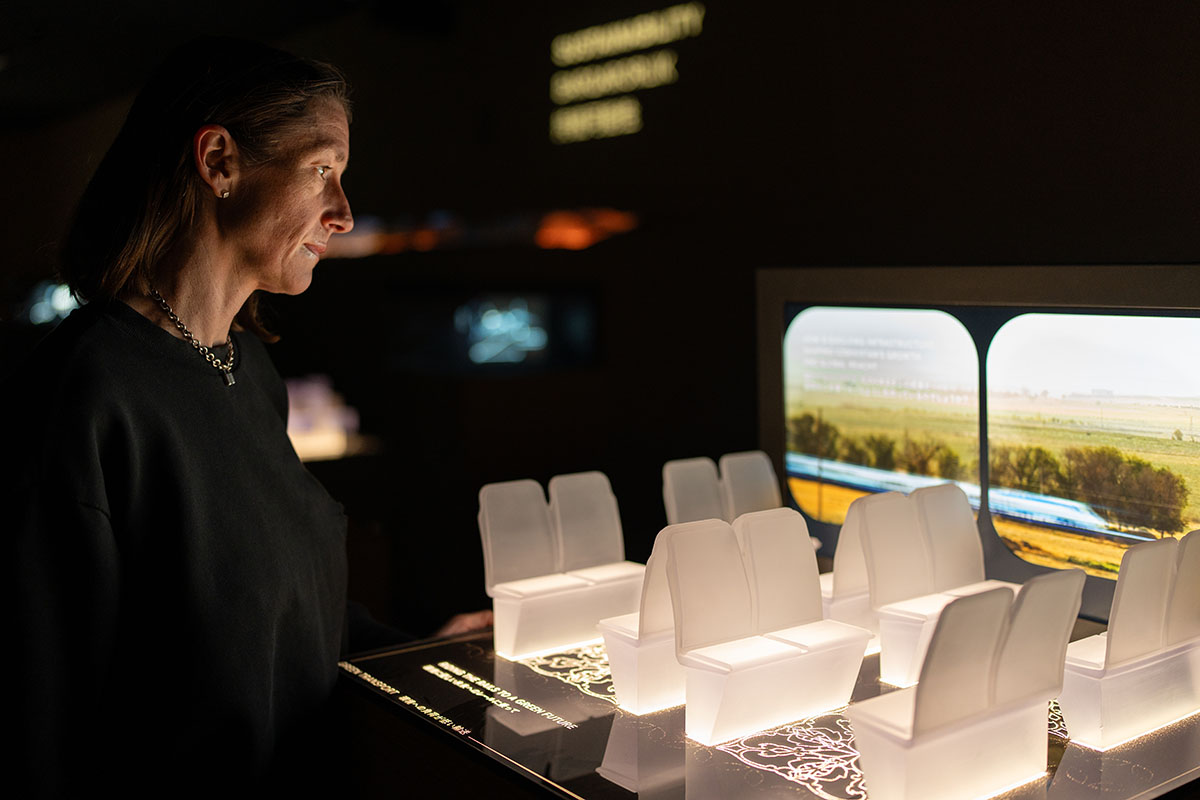
A 360-degree multimedia projection surrounds a rising platform at the center of the pavilion. The "seeds of knowledge," which are shown as shining roots and representations of Uzbek workmanship, sprout at the start of the three-minute walk from the ground floor to the terrace.
The Registan madrasahs' kaleidoscopic animations give way to their actual construction. The visual experience is accompanied by music and voices that combine contemporary soundscapes with classical instruments.
The audience joins a universe of communication in which ideas and information spread like pollen. When the projection opens, it displays Uzbekistan's expansive natural landscape entwined with high-speed rail, renewable energy initiatives, and urban developments.
A pomegranate tree, which represents a lively and rejuvenating Uzbekistan, blossoms in the center. The audience members themselves become the seeds of the future as the act comes to a poetic close, walking straight from the platform onto the pavilion's terrace.
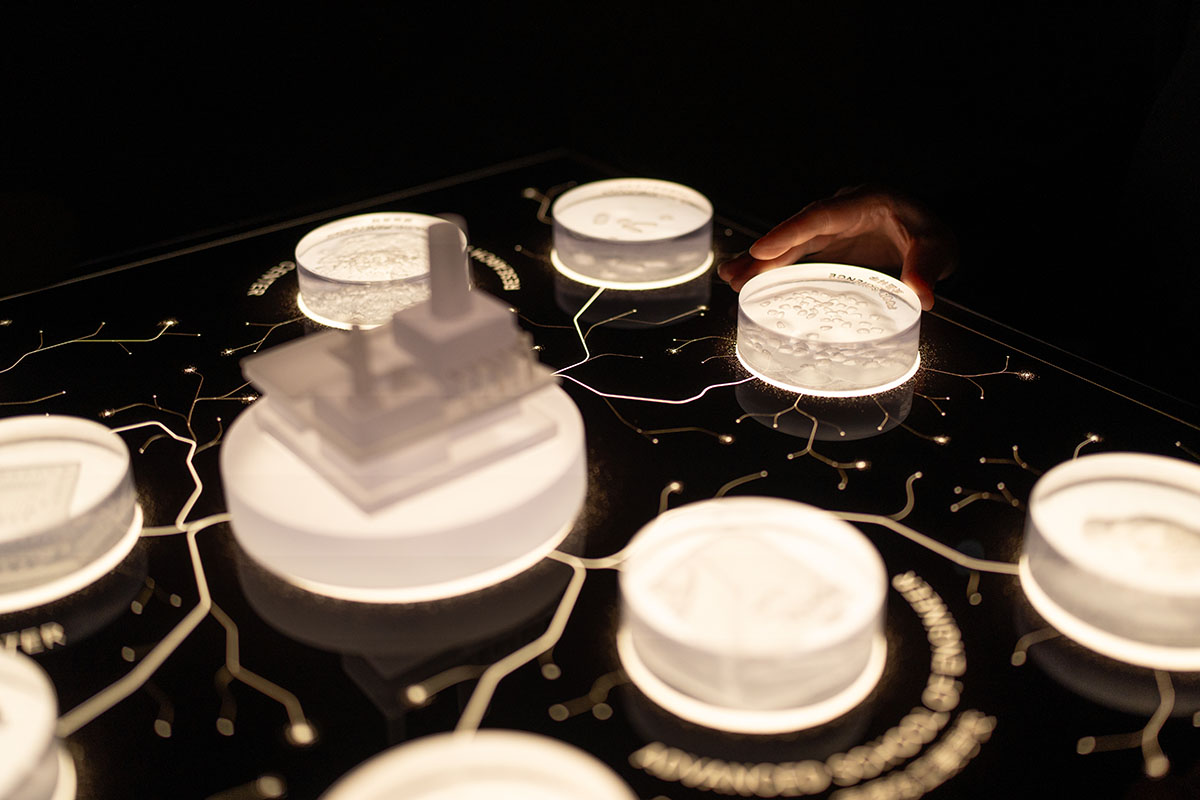
The exhibition's visual identity is founded on a design that blends traditional ornamentation with contemporary clarity. The exquisite stucco ornamentation of Uzbek buildings, calligraphy, iconography, and wayfinding features were inspired by Ganch carving.
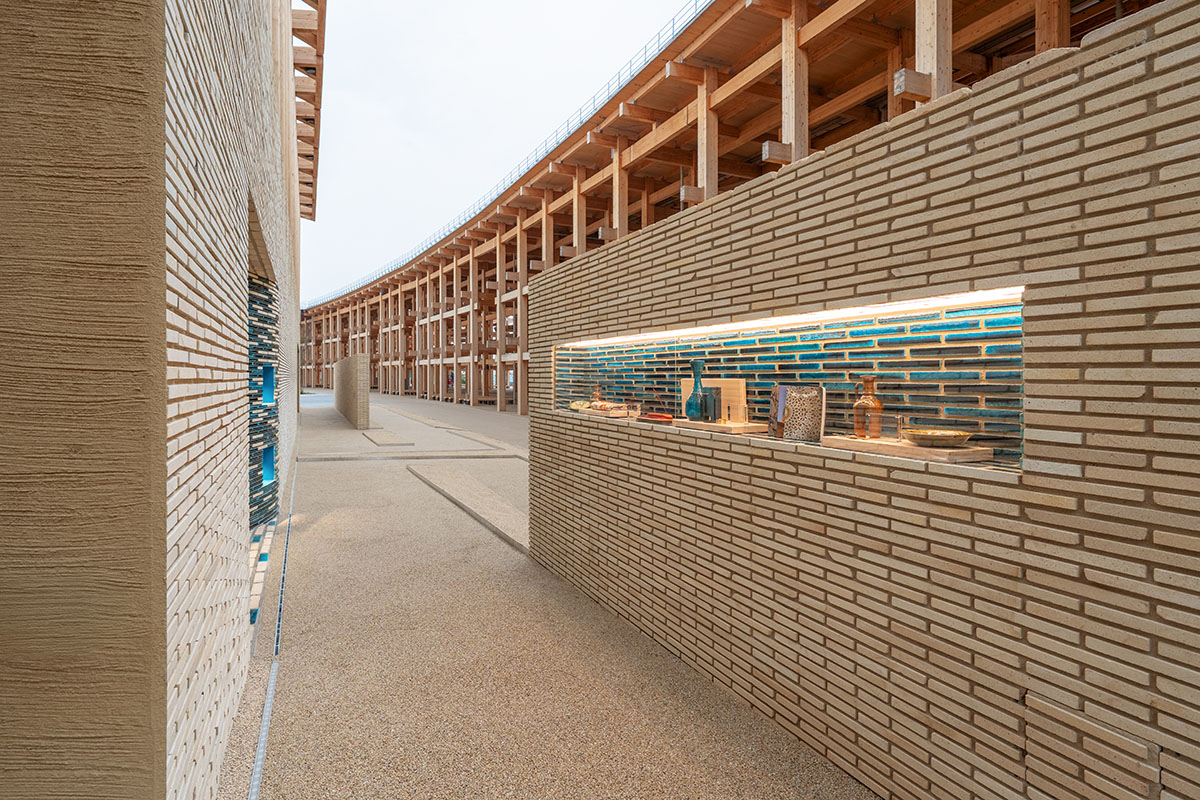
These create a pleasing conversation between space and images because they are somewhat three-dimensional and partially built into the walls.
Earthy tones and geometric shapes symbolize fertile ground, signifying development and metamorphosis, while the font and color palette adhere to a natural style.
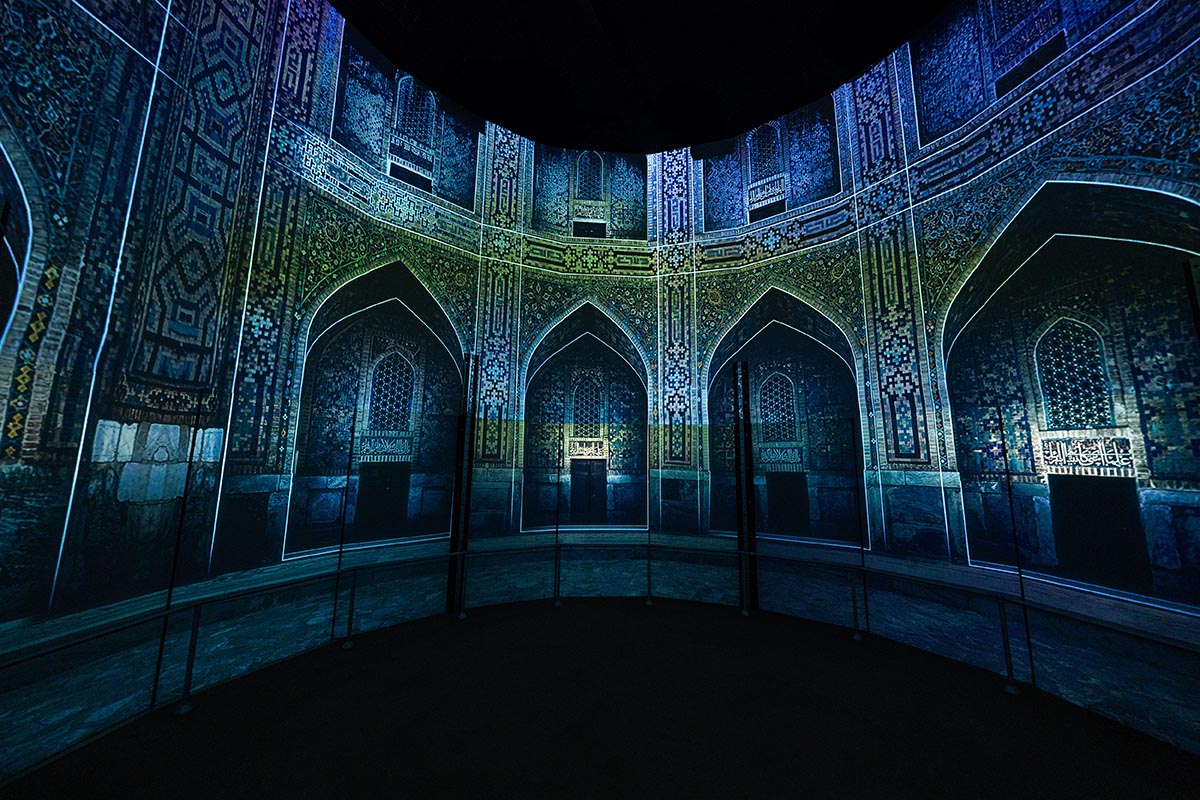

Ground floor plan

First floor plan

Cross-section
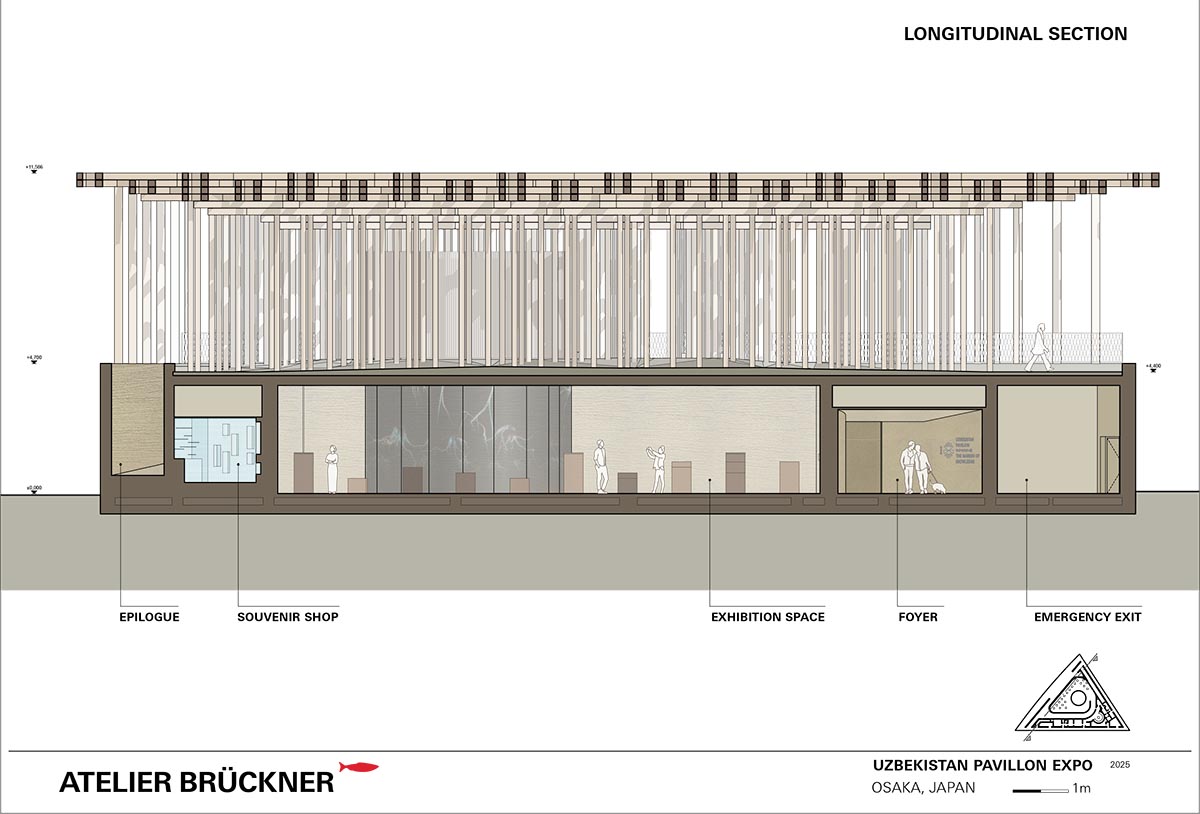
Longitudinal section
Atelier Brückner is a leading design studio and museum planner known for innovative visitor experiences. Founded in 1997 in Stuttgart, it has completed over 220 international projects, employing over 130 people and receiving 350 awards.
Find out all pavilions on WAC's Osaka Expo 2025 page.
Project facts
Project name: Garden of Knowledge – A Laboratory for a Future Society
Architects: Atelier Brückner
Building height: 11.6 m
Building width: 38.8 m
Building depth: 33.9 m
Site area: 1,036 sqm
Building footprint: 635 sqm
Total floor area: 1,272 sqm
Number of levels: 2 (Ground floor + terrace) Visitors experience area: 860 sqm
Client: Uzbekistan Art and Culture Development Foundation (ACDF), part of the Ministry of Investment, Industry, and Trade of the Republic of Uzbekistan
Atelier Brückner: General contractor, architecture, exhibition design, scenography, graphics
Media planning with: medienprojekt p2
Light planning with: Klee
Media concept & production: Tamschick Media+Space GmbH
Realization: NÜSSLI
All images © Josef Šindelka courtesy of Atelier Brückner.
All drawings © Atelier Brückner.
> via Atelier Brückner
Atelier Brückner Osaka Expo pavilion Uzbekistan Pavilion wood
